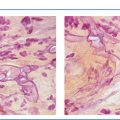Introduction
It is of no surprise that the efforts behind community outreach and health equity have many layers. There are ever-evolving pieces as well as variables that remain consistent. Within this chapter, we will take a look at experiential approaches and best practices to fostering effective and sustainable community outreach and health equity. An example from the field is offered to illustrate the utility of this approach in practice. All of the approaches covered in this chapter include some of the same principles too. These principles first and foremost begin with building and sustaining a relationship with the community. These practices include, but are not limited to, ensuring that an under-empowered community is being supported through collaboration with internal and external stakeholders, connecting to community passion, understanding disparities and barriers to care, respect, and being aware of potential historical traumas or stigmas, letting the community share their needs versus assuming them, active listening, accountability, process/program transparency, understanding the role of a healthcare institution, and fostering overall collective efficacy for health advocacy. All of these practices have the common goal of health equity, meaning each member of the community is given an opportunity to obtain high-quality healthcare regardless of their differences from one another. In practice, this requires the removal of unjust disparities. What makes a disparity unjust, however, requires an intentional engagement of stakeholders to identify blind spots that may compromise the delivery of care.
Ensuring that an under-empowered community is being supported through collaboration with internal and external stakeholders is, in other words, gathering those who have complementing resources to provide a full spectrum of support for health education and screening. Also, identifying these stakeholders will help with a comprehensive look at who will be involved or affected by outreach goals and outcomes. By proactively researching and evaluating current programming within the targeted area or population, the community outreach strategy can better define what improvements need to be made and what best practices may need further support for sustainability. The internal stakeholders one would review are what the health institution is providing to the community at large. This can take the shape of monetary support, in-kind donations, educational resources, screening, cultural competency, ethics, advocacy, representation, or how inclusive the culture is within the health institution. This can also include ensuring various team members are heard when deciding the groups or external disease sites to focus on and support.
The external stakeholders include the general public, specific community identifiers such as race, ethnicity, or identity, the local government support programming, government policy connected to health access and coverages, local events that support health and wellness, community-based organizations, citizenship, refugee status, educational institutions, community leaders, faith and spiritual influencers, research within the department of health, and employers. Although it is nearly impossible to keep a day-to-day update on each of these variables, a general understanding is essential to the impact they each have on the community at large and specific groups within.
Connecting to community passion is another way that community outreach can create realistic strategies, reach goals, and obtain successful outcomes. In other words, the health institution and community will have a shared vision and value for the same results. This can be obtained by primary or secondary research on a specific population or community’s values, shared interests, behaviors, providing resources for primary needs, and micro-culture expectations. Once these are identified, community outreach can be paired with sustainable programming and education.
Moving forward beyond just connecting to a community then leads to the importance of screening and having a support system within the community. One way we have been able to connect to a community through this approach is through our work with the lesbian, gay, bisexual, transgender, queer, and/or questioning (LGBTQ+) community regarding breast health/cancer screening. There is a stigma from some of the LGBTQ+ that medical providers need to be aware of and accept additional training for transgender patients. Nonetheless, knowing there are higher risks for various diseases and health habits, such as tobacco use and drinking, our outreach team had focused efforts to support health and wellness by providing clinical breast exams at Pride events. Also, by bringing these efforts to a space where a community is gathering brings the internal social support needed to build trust and share or show representation.
Not only does screening provide potential life-changing and life-saving resources, but it may also create a need for social support and navigation of the health system. Our organization has identified this need and fosters the team member roles of community health workers, social work navigators, and cancer nurse navigators. These play a crucial role in supporting the patient’s needs, beyond the screening or medical care to follow.
Understanding a population’s health disparities and barriers to care are generally data-driven approaches to community outreach and health equity. Although objective data is important to establish a clear strategy with measurable outcomes, subjective data and feedback are also vital to the big picture and create an interconnected approach to supportive and collaborative change. As many know, the objective data will provide an assessment of a community’s general health status and access to care. Subjective feedback will aid in understanding perceptions, the influence of social roles and norms, previous experiences, and willingness to engage in programs such as screening. Stepping into a specific population’s shoes is a necessary first step toward genuine support, care, and help for others.
With these approaches in mind, a best practice of how feedback and subjective data have been used within our organization can be reviewed throughout our human papilloma virus (HPV) education program for youth. Our initial goal was to provide HPV Education to children ages 13 to 17 within an urban population to see whether this can impact the self-reported HPV vaccination rate, increased knowledge of HPV contraction, and impact decisions on safe sex behaviors. Although Wisconsin HPV vaccination rates were slowly rising at the time, there were still glaring gaps in education and vaccination access throughout the state. Only 13 of our 72 counties have reached vaccination rates of 15% or higher for eligible 11- to 12-year-old boys and girls. Milwaukee County vaccination completion rates still hover around 40%. It was clear more work needs to be done.
In summary, this education program was brought to a public school system in Wisconsin after objective data was reviewed and found to be understated in the ninth-grade curriculum at the time. Through evaluation, subjective and objective data review, and feedback from providers, teachers, and health education specialists were able to support a revised HPV education program. Within 4 years, we educated over 4000 freshmen in health education classrooms in Milwaukee, WI. We took program feedback from students and tailored our presentation and education to their needs. We continue to ask the students questions to ensure the program is taught at a level that could be easily understood if they know whether their HPV vaccination series was completed, and if they believe they have enough HPV vaccination access resources going forward. We also give students the opportunity to ask questions of the healthcare provider present. In 2019, our data reflected that 74% of the students knew what HPV was before our lesson, yet only 32% knew if they had completed the vaccine, 22% reported they did not have the vaccine series completed and the rest were unsure. Table 6.1 shows there has been an increase in vaccination rates within the zip codes of the schools where the program was presented. By tailoring our work to educate and influence HPV behaviors, including vaccination rates, we were able to see an increase in vaccination utilization in Milwaukee, WI. The largest increases were within 53,221 with 8.19% and 53,204 with a 7.03% increase in vaccination rates.









